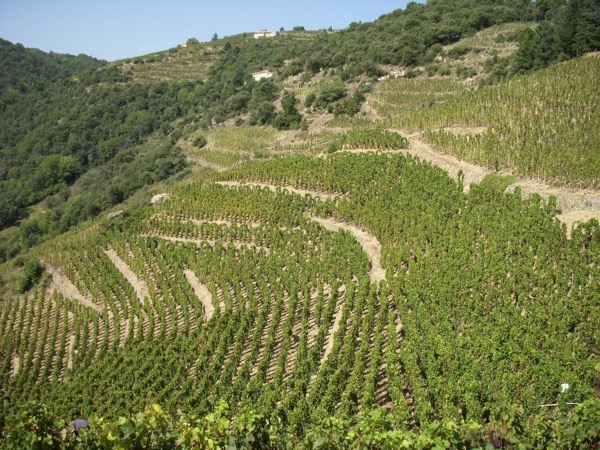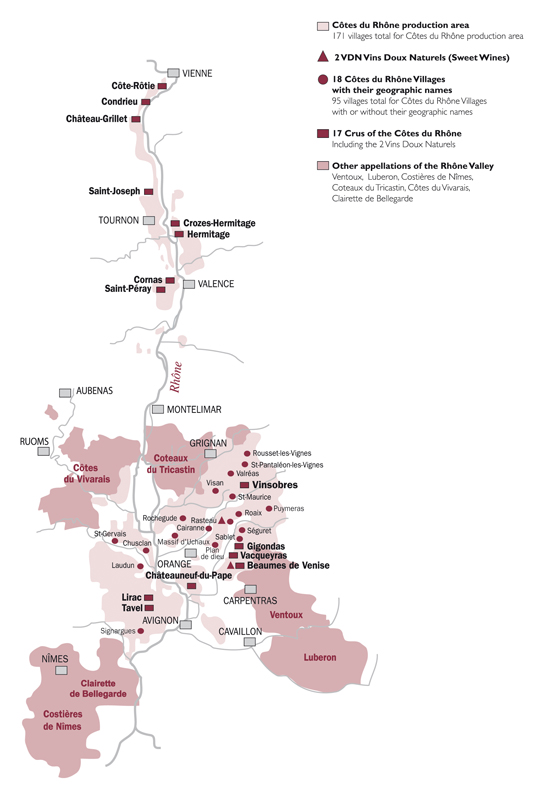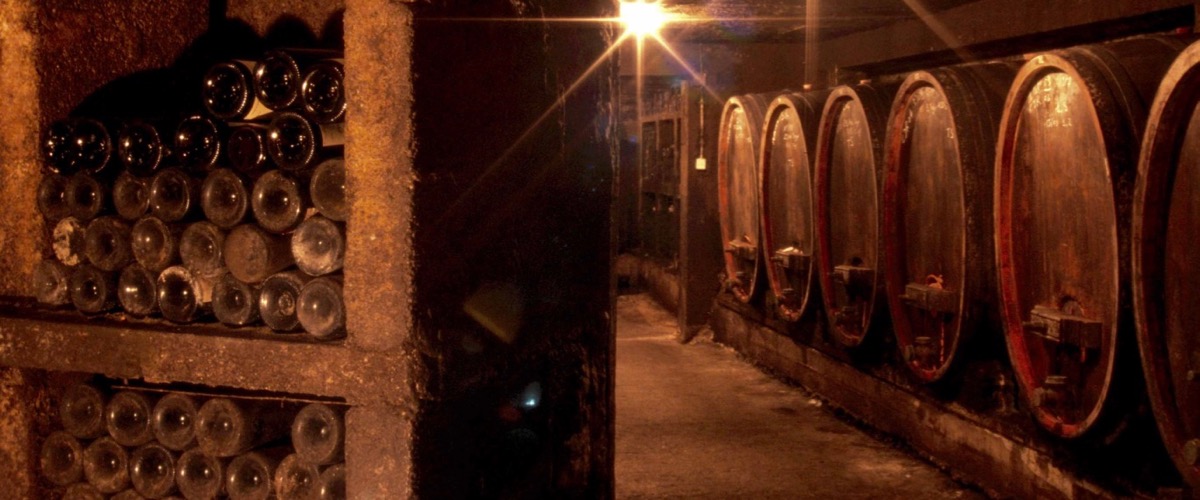In 1996 during my first week at Yarra Yering, Doc handed me a bottle of wine, with simple instructions, enjoy. It was a 1983 Auguste Clape Cornas. Wow! The sophistication and personality of the wine was insane. It just screamed DRINK ME! The beautiful texture, incredible depth of fruit, and, elegance. The complexity of the wine entranced.
In 1999 I found myself cruising through the Rhône Valley. Dining at Le Chaudron in Hermitage, I completely miss read the menu and ordered a plate of offal, don’t get me wrong I love a little offal, but, a full plate, was a bit much. Fortunately, I had no problem with the wine list. On it the epic 1990 JL Chave Hermitage, the elegance and sophistication, married with incredible power and such beautiful tannins took me back to the 1983 Cornas from Clape. It remains in the top 10 wines I’ve ever drunk!
At the time, in Australia, when you saw this intensity of flavour it was typically in a wine that was over the top, clumsy, and with a less than pleasing texture. These two makers were doing something incredible, they were taming the beast. Moving from Death Metal to Mozart!
Today we offer the 2015 wines from August Clape. A wine clearly in the Top 5 Shiraz wines made in France.
Producers like Clape, Chave, Allemand, Jamet, and, Paris are amongst those leading the Northern Rhône by example toward wines of as Nick Stock put’s it, “…greater depth, definition and interest across the board. Much like the Southern Rhône, refined ideals and methods elucidate this region’s fascinating and expressive terroirs. It’s something we feel very positive about.”
About August Clape
If you French is OK, this is worth a watch. note, the large old barrels, no double new oak here! Cement is often used for maturation.
Cornas is one of the world’s few blue-chip addresses that we still associate with traditional winemaking. For this, we can thank Auguste Clape, the village’s icon, who has demonstrated for more than half a century how to make old school Cornas of beauty, typicity and character.
Clape Cornas is the very essence of traditionally made Northern Rhône Syrah, born of the ancient clone, “la Petite Syrah,” planted in the village’s best sites, blended for balance and complexity and allowed to “make itself” as much as possible.
All of this is a result of Clape’s vast experience and open mind; he has always worked traditionally, but not bound by rules, both in the vineyard and in the cellar. As John Livingstone-Learmonth states in The Wines of the Northern Rhône, “… he is one of the few growers I have ever met who succeeds in bridging the connection between man and nature … Belief, on the one hand, listening on the other. No closed walls. The true philosopher born of the exceptional opportunity that winemaking can confer.”
Today, octogenarian Auguste continues to make the quintessential Cornas, with son Pierre-Marie and grandson Olivier at his side. Most importantly, Pierre-Marie has worked with Auguste since 1989, thoroughly absorbing his methods and philosophy, ensuring a seamless transition from one generation to the next. In fact, Pierre-Marie’s rich, two-decade “apprenticeship” reminds us of Maria-Teresa Mascarello’s years of collaboration with Bartolo.
Better Than Ever
Today’s Clape wines are greater than ever before—and not just because of the arrival of a new generation. The vineyards are obviously older and they’ve benefited from the addition of century-old Petite Syrah vines purchased from Auguste’s fellow icon, Noël Verset. Today, few French growers have a more impressive palette of crus with which to work than does Clape.

And finally, there has been the creation of lesser cuvées, which allow Clape’s flagship Cornas to have even greater depth, complexity and typicité than in the past. More than ever, Clape’s Cornas is the very definition of the appellation.
The winemaking today is of course largely unchanged. The family harvests only when the fruit is fully ripe, and the old vine fruit is not de-stemmed. The primary fermentation takes place in concrete tanks for six to seven days, followed by three to seven days of maceration to extract fine tannins.
After malolactic, ageing is in old demi-muids and piéces; there is no new oak. As Auguste Clape told author John Livingston-Learmonth, “as for ageing casks, here you need neutral wood with no tannin in it. The Syrah must breathe.”
Four Unique Wines
Clape’s masterpiece is, of course, the classic Cornas, precisely blended from five to six cuvées of the oldest vines in the best sites. The backbone comes from Reynard, La Côte and Sabarotte. The old vines here are la Petite Syrah—the old clone considered by many to be the true Syrah—which creates a stunningly deep and complex wine that will develop for decades.
The Domaine now bottles three other Syrah wines as well. The least expensive, but still ageworthy, wine is the Le Vin des Amis, a blend of young-vine Cornas and Syrah grown just south of the village. Next up is the Côtes du Rhône, which includes fruit from 120-year-old vines near St. Peray and declassified Cornas.
Since 1998, a second Cornas has also been bottled: Renaissance. It’s made from 20 to 25-year-old vines on the Domaine’s best slopes as well as older vines from the lower slopes. An earlier maturing wine than the classique, it should develop for two decades.
Clape was the village’s first producer to bottle his own wine in 1957, having previously sold it in barrel to négociants such as Jaboulet. Since that time, Clape’s wine has been the essence of Syrah grown in Cornas’ suntrap of steep granite slopes—dark berries, black olive, dried herbs, woodsmoke and violets when young, developing astonishing depth, complexity and velvety texture with age.
Where in the World are They?
Cornas is at the bottom of the Northern Rhône right next to Valence.
About the Wines
Wines of Auguste Clape
2015 Domaine Auguste Clape Cornas
The two Cornas releases in 2015 are head-turners that warrant serious attention. The flagship 2015 Cornas comes from the older vines of the estate, with a good chunk from the Reynard lieu-dit, which is unquestionably one of the grand cru sites in the appellation. This is a big, rich, sexy vintage from this estate and the top cuvée has a wealth of material and building, sweet tannin, as well as full-bodied richness and a great finish. It’s more approachable than the 2010 was at the same age, but it’s still going to require 5-7 years of cellaring. It’s a brilliant wine.
Clape’s flagship 2015 Cornas is enormously complex and compelling. Almond skin, cherries, blood and herbal notes all combine on the nose, while on the palate this medium to full-bodied wine is firmly tannic but ripe and balanced, with a rich, velvety and nearly endless finish.
2015 Domaine Auguste Clape "Renaissance" Cornas
The two Cornas releases in 2015 are head-turners that warrant serious attention. The 2015 Cornas Renaissance comes from the younger vines of the estate and terroirs closer to the village. I was able to taste the different components, all of which were loaded with fruit as well as classic Cornas notes of black olives, violets and pepper.
2016 Domaine Auguste 100% Syrah Cotes Du Rhone
The 2016 Cotes du Rhone is essentially declassified Cornas, so it's entirely Syrah but from young vines. It combines tarry notes with cherry fruit and some earthy notes.
It’s medium-bodied, with firm, dusty tannins on the finish.
2016 Domaine Auguste "Clape Le Vin Des Amis Syrah"
The medium-bodied 2016 Le Vin des Amis is derived from Syrah grown on a flat parcel in the village of Cornas. It offers bright cherry fruit allied to a crisp, firm finish.
2016 Domaine Auguste Clape Saint Peray
The only white wine chez Clape is the 2016 Saint Peray. From a single hectare, it’s a blend of 70% Marsanne and 30% Roussanne. It shows plenty of spice—clove and
pepper—to go along with ripe, honeyed fruit and citrus zest. It seems fresh yet nutty at the same time, an intriguing juxtaposition.

You must be logged in to post a comment.